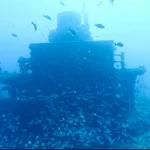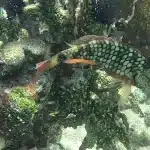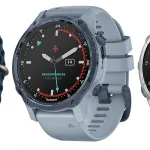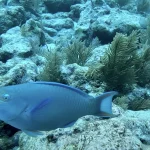Choosing the Best Dive Boat for Your Family Adventure
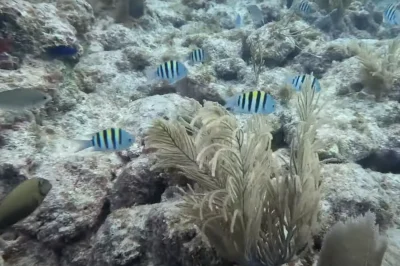
Table of Contents
- Choosing the Best Dive Boat for Your Family Adventure
- Essential Safety Tips for Family Scuba Diving in Key Largo
- Top Dive Sites that Thrill All Ages in Key Largo
- Debunking Myths: Can Kids Really Scuba Dive Safely?
- The Emotional Impact of Family Diving: Building Memories Underwater
- Preparing Your Dive Equipment: What Every Family Needs to Know
- Understanding Marine Conservation through Family Diving
- Future of Multigenerational Diving Trips: What’s Next?
Introduction
Key Largo presents an aquatic paradise where adventure meets relaxation, captivating divers from 10 to 70. This blog post explores how a single boat trip in this renowned diving destination mesmerizes everyone, revealing the secrets to an unforgettable multigenerational scuba experience.
Choosing the Best Dive Boat for Your Family Adventure
Essential Safety Tips for Family Scuba Diving in Key Largo
When planning a family scuba diving adventure in Key Largo, prioritising safety is crucial. Here are essential protocols tailored to ensure a safe and enjoyable experience for divers of all ages.
Safety Protocols
- Buddy System: Always dive with a buddy, and ensure that children are paired with a certified adult or instructor. Never allow kids to dive unsupervised with their peers.
- Dive Planning: Before entering the water, create a detailed plan focused on depth, dive duration, and entry/exit points that cater to the youngest diver’s skill level.
- Pre-Dive Checks: Conduct thorough inspections of all gear, including regulators, buoyancy control devices (BCD), and air supplies. Confirm that all equipment fits children properly, steering clear of hand-me-down gear that may not suit their current size.
Gear and Training
- Proper Instruction: Ensure a 1:1 instructor-to-student ratio for children under 12, and a 1:2 ratio for those aged 12 to 15.
- First-Aid Preparedness: Bring first aid kits equipped with paediatric-specific items, such as child-safe pain relievers and insect repellent.
- Health Screening: Postpone diving if any family member exhibits symptoms like coughs, congestion, or ear discomfort, as this can affect their safety underwater.
Location-Specific Considerations
- Site Selection: Choose beginner-friendly sites within Key Largo’s Florida Keys National Marine Sanctuary, like the Benwood Wreck or nearby shallow reefs, to enhance safety and enjoyment.
- Check Conditions: Stay informed about prevailing conditions, including potential rip currents and weather changes, and be ready to adjust plans as necessary.
Logistics and Budget
- Travel Tips: Consider prebooking adjacent airline seats if family members have different surnames to avoid complications. Look for shoulder-season discounts for dive packages during less busy times.
- Marine Awareness: Educate children about local marine life and interaction protocols to foster respect and safety within the underwater environment.
In-Water Practices
- Air Management: Keep a close watch on air supply, ensuring divers have a safety reserve for ascents. For younger divers, recommend a slower ascent rate to reduce fatigue risks.
- Equalisation Techniques: Teach proper ear pressure equalisation techniques during descents to avoid injuries, and encourage immediate ascents if discomfort persists.
By following these safety tips, families can ensure a memorable and secure diving experience in the breathtaking waters of Key Largo.
Essential Safety Tips for Family Scuba Diving in Key Largo
Top Dive Sites that Thrill All Ages in Key Largo
Key Largo is celebrated as a premier destination for family-friendly scuba diving, making it accessible and enjoyable for divers of all experience levels from ages 10 to 70. With warm, clear waters and a diverse marine ecosystem, several dive sites are particularly suited for families looking for shared underwater adventures.
Top Family-Friendly Dive Sites
- Molasses Reef:
With depths ranging from 18 to 35 feet, this site is perfect for both novice and seasoned divers. The warm, inviting waters are teeming with diverse marine life, including colourful parrotfish and tranquil groupers. Its proximity to the Gulf Stream enhances marine visibility, providing an exhilarating underwater experience for everyone.
- John Pennekamp Coral Reef State Park:
This protected area is part of the Florida Keys National Marine Sanctuary, featuring stunning coral formations and gentle currents. It’s a hotspot for guided tours that emphasise education and safety, making it ideal for families who appreciate learning about marine ecosystems while they dive.
- North Dry Rocks:
Located at a shallow depth of around 20 to 30 feet, this site includes unique spur-and-groove structures perfect for novice divers. Though it lost a popular swim-through during Hurricane Irma, it’s still an excellent spot for observing schools of minnows, making it an exciting location for both divers and snorkelers.
- Key Largo Dry Rocks:
This site offers a variety of dive locations such as Dry Rocks and North North Dry Rocks, each featuring unique underwater landscapes and depths accessible to divers of all skill levels. The shallow depths close to shore allow for easy access and lots of exploration.
- Carysfort Reef & Watsons Reef:
Both reefs are approximately 30 feet deep and provide an exhilarating mix of diving and snorkelling experiences. Carysfort Reef, a bit more distant, is especially notable for its vibrant ecosystem, making it a worthy excursion for adventurous families.
Dive Outfitters
- Sea Dwellers Dive Center: This outfitter specialises in family-friendly services, offering charters and instructions geared towards safe and enjoyable experiences for all ages.
- Island Ventures: With a focus on various dive sites throughout the area, Island Ventures is a reliable choice for families, ensuring quick access and a safe diving experience.
Nearby Family Activities
- Dolphin Experiences: Many dive excursions can be paired with unforgettable interactions with dolphins, enhancing the family adventure element.
- History of Diving Museum (Islamorada): A short drive away, this museum opens a fascinating window into diving history, making it an excellent educational outing for families.
With a wide range of sites boasting accessible depths and vibrant marine life, Key Largo ensures that every family member can enjoy the thrill of diving, regardless of their level of experience. Always remember to check the conditions and consider guided tours for a safer diving experience.
Top Dive Sites that Thrill All Ages in Key Largo
Common Misconceptions About Kids in Scuba Diving
Many parents are apprehensive about allowing their children to participate in scuba diving activities due to a variety of misconceptions. However, understanding the realities surrounding child participation in this exciting sport can help families make safe and informed choices.
Myth: Children are unsafe in scuba diving due to lack of strength or bone maturity
Reality: The primary risk isn’t due to physical limitations such as strength but rather to inexperienced adult supervision. Children may have shorter attention spans and can be easily distracted, necessitating constant monitoring of their air supply, depth, and ascent rates. Proper training and experience for adult dive partners are crucial in mitigating these risks.
Myth: Any diving depth is risky for children
Reality: Controlled exposure to limited depths and dive times significantly reduces risks. Shallow dives, ideally under 40 feet for younger divers, with clearly established guidelines are much safer than unrestricted explorations. Still, even at greater depths, potential hazards like barotrauma must be carefully managed.
Myth: Healthy children can safely dive without medical checks
Reality: There are specific medical contraindications that can affect a child’s ability to dive safely, such as epilepsy, asthma, and heart defects. Prospective young divers should undergo thorough medical evaluations to ensure they can safely participate in the sport.
Myth: Age determines a child’s readiness to dive
Reality: Emotional maturity and skill assessments play a much more significant role than age alone. Programs such as PADI Bubblemaker can allow children as young as 8 to dive, but they require the oversight of trained instructors who can evaluate a child’s capacity to handle emergencies and follow safety protocols.
Myth: Kids can dive like adults
Reality: Youth divers need specialised training and safety measures in place, including tailored equipment and adult supervision, to ensure their experiences are both enjoyable and safe. Training programs like PADI’s Seal Team focus on developing skills in controlled environments.
By addressing these misconceptions, families can confidently navigate the world of scuba diving, ensuring that the diving adventures are both thrilling and safe for participants of all ages.
Debunking Myths: Can Kids Really Scuba Dive Safely?
Family diving creates profound emotional connections and lasting memories through shared underwater experiences. This activity fosters stronger family bonds by encouraging teamwork, trust, and collaborative problem-solving during training and dives. Each dive becomes a rite of passage that strengthens communication as family members rely on each other for safety and support, deepening emotional understanding.
Strengthening Family Bonds
- Shared experiences replace routine interactions with unique adventures, creating a sense of unity and belonging. Learning buoyancy control, underwater communication, and navigation as a family builds reliance on one another.
- Trust and support develop as members overcome challenges like mastering new skills together, fostering mutual encouragement and shared pride in achievements.
- Traditions form around recurring dive trips, establishing cherished rituals that reinforce familial cohesion.
Personal Growth and Development
Diving training instils discipline and adaptability as families navigate structured programs and unpredictable underwater conditions. Problem-solving activities during dives teach resilience and critical thinking. These skills extend beyond the water, enhancing self-confidence and self-esteem in daily life.
Mental Well-being
The immersive underwater environment provides a stress-relief mechanism through:
- Meditative breathing techniques for buoyancy control, which activate the parasympathetic nervous system to reduce anxiety.
- Sensory calm from weightlessness and the rhythmic sound of breathing, creating a therapeutic escape from daily pressures.
- Social connections through dive communities, combating isolation and fostering camaraderie with like-minded families.
Shared Exploration and Curiosity
Exploring diverse marine ecosystems together sparks curiosity and wonder, creating lifelong memories of discovering coral reefs, sea creatures, and vibrant underwater landscapes. Families develop a deeper appreciation for environmental preservation while experiencing nature’s beauty firsthand.
Family diving transcends recreation, becoming a catalyst for emotional growth, trust, and enduring memories rooted in shared adventure and discovery.
The Emotional Impact of Family Diving: Building Memories Underwater
Essential Scuba Gear Considerations
When planning a family scuba diving trip, having the right equipment is crucial for safety and enjoyment. The essentials include:
- Buoyancy Control Device (BCD): This is necessary for maintaining buoyancy underwater and returning to the surface safely.
- Regulator: A good-quality regulator delivers air from the tank to the diver and should include a primary and an octopus for redundancy.
- Dive Computer: Essential for tracking depth and time, helping you stay within safe limits to prevent decompression sickness.
- Mask and Fins: Proper fit is vital; consider renting gear to ensure it’s suitable for everyone, especially for kids who may need smaller sizes.
- Wetsuit or Drysuit: Depending on the water temperature in Key Largo, a 3-5mm wetsuit is typically recommended for thermal protection.
Family Diving Tips
When diving with kids, consider the following:
- Child-sized Gear: Opt for appropriate sizes like junior masks and shorter fins to ensure comfort and effective swimming.
- Comfort Items: Bring neoprene booties for warmth and rash guards for sun protection to make longer days comfortable.
- Shallow Dives: Begin with shallow dive sites (maximum depth of 10 metres) to minimise risks associated with nitrogen exposure.
Senior Diving Considerations
Seniors should keep in mind the following gear and safety tips:
- Streamlined Equipment: Opt for lightweight BCDs with integrated weights to minimise physical strain.
- User-Friendly Dive Computer: Choose a computer with a large display for easy reading and access to important information.
- Medical Clearance: Consult with a physician to ensure fitness for diving, especially for those with existing medical conditions.
Packing Tips for Families and Seniors
Here are some packing strategies to maximise your dive experience:
- Pre-Dive Checks: Inspect gear and secure everything before your trip. This should include checking the connection of your BCD to the tank.
- Emergency Kits: Always pack essentials such as spare batteries, first-aid kits, and signalling devices, like a surface marker buoy.
- Rental Consideration: Consider renting larger equipment like tanks and wetsuits to save luggage space, while packing personal essentials for comfort and fit.
Key Largo-Specific Advice
Key Largo’s clear waters make it an ideal diving destination. Make sure to adhere to local regulations, and familiarise yourself with the dive operator’s equipment rental policies and certifications needed for specific dives.
Preparing Your Dive Equipment: What Every Family Needs to Know
Conservation Infrastructure
Key Largo is home to the Florida Keys National Marine Sanctuary (FKMNS), which encompasses six Sanctuary Preservation Areas (SPAs). These SPAs are vital for protecting critical marine ecosystems, including coral reefs, from harmful practices like fishing and anchoring. The conservation legacy in Key Largo began with the establishment of the John Pennekamp Coral Reef State Park in 1960, the nation’s first undersea preserve. It evolved further with the designation of the Key Largo National Marine Sanctuary in 1975. Families can explore these protected zones while learning about their ecological significance and the importance of conservation in these beautiful underwater environments.
Dive Centres & Partnerships
Several reputable dive centres in Key Largo collaborate with conservation organisations to provide structured programs aimed at involving families in marine conservation. Some notable partnerships include:
- Rainbow Reef Dive Center: This centre partners with the Ocean Conservation Foundation for coral restoration initiatives, including coral farming and reef rehabilitation.
- Sea Dwellers Dive Center: They work with the Coral Restoration Foundation on extensive coral cultivation and outplanting efforts that enhance coral habitat health.
- Silent World Dive Center: Provides PADI AWARE certification courses which educate divers on marine life identification, sustainable diving practices, and key conservation strategies.
These dive centres cater to divers of all skill levels, making them an excellent choice for families with children or beginners.
Education & Certification
Engaging in marine conservation becomes even more rewarding when families enrol in specialised educational courses. Opportunities include:
- PADI AWARE Programs: These programs focus on the ecology of coral reefs, understanding marine species behaviours, and practical methods to reduce ocean pollution.
- Volunteer Opportunities: Families may participate in reef-cleaning events, coral monitoring, or habitat restoration activities under the guidance of trained professionals.
Family-Friendly Activities
Key Largo’s dive sites offer accessible and enjoyable conservation activities tailored for families:
- Snorkelling in SPAs: Families can explore the protected areas filled with vibrant fish and colourful coral, fostering a deeper appreciation for marine biodiversity.
- Coral Nursery Visits: Visiting coral nurseries (like those maintained by the Coral Restoration Foundation) allows families to observe propagation techniques and understand their importance in reef restoration.
- Night Dives: Guided night dives provide opportunities to experience the breathtaking bioluminescent organisms and the fascinating nocturnal marine life.
By combining thrilling diving adventures with educational programs and tangible conservation efforts, families visiting Key Largo can make meaningful contributions to marine stewardship while creating unforgettable memories.
Understanding Marine Conservation through Family Diving
Trends Shaping the Future of Family Scuba Diving Trips
As we look towards 2025, several key trends are emerging that promise to redefine family-oriented scuba diving experiences, particularly in locations like Key Largo. These evolving dynamics focus on safety, accessibility, and engaging educational opportunities for all ages.
Technological Innovations will play a key role in enhancing family diving trips. Innovations like AI-driven safety systems offer real-time health monitoring, making diving safer and less stressful for parents and new divers alike. Lightweight and ergonomic gear is becoming widely available, ensuring that both young and older divers can participate comfortably in underwater adventures. This technology also helps parents monitor their children’s conditions during dives, greatly reducing anxiety, especially for novices and young divers.
Family-Centred Certification Programs are on the rise, with more dive operators offering structured programs tailored for families. For instance, renowned operators like Kids Sea Camp and Aggressor Adventures are providing programs that include Family Weeks filled with guided dives, marine conservation workshops, and multigenerational certifications. These initiatives not only foster diving skills but also enhance family bonding through shared educational experiences.
Key Insights for Key Largo
While specific programs in Key Largo may not always be highlighted, several broader trends can influence families planning their diving itinerary:
- Eco-Conscious Diving Experiences: Families should anticipate a rising emphasis on sustainable diving practices, including reef-safe policies and collaborations with local conservation efforts to preserve the underwater ecosystem.
- Multi-Day Packages: Divers can look for all-inclusive packages that mirror offerings from regional operators, encompassing recreational activities tailored for family members of varying age groups.
- Technology Integration: Expect dive operators to adopt modern training methods, potentially incorporating on-site virtual reality training or augmented reality guides to improve the diving experience for children and teens.
Recommendation: When planning a trip to Key Largo, reach out to local diving operators and eco-resorts to inquire about family-oriented programs that align with these anticipated trends. Operators are increasingly offering protected dive-site tours and junior diver certifications, incorporating the innovative practices seen at global resorts and dive centres.
Future of Multigenerational Diving Trips: What’s Next?
Family-Friendly Dive Centres
For families seeking scuba diving experiences in Key Largo, several reputable dive centres offer tailored programs with conservation-conscious practices. Below are key recommendations:
- ScubaFun Florida
- Offers a “Try Scuba Diving for a Day” program with no prior experience required, accommodating divers from age 10 and up.
- Includes instructor-led reef dives with comprehensive safety briefings.
- Rainbow Reef Dive Center
- A recognised PADI 5 Star CDC, providing access to diverse dive sites including coral reefs, wrecks, and walls in the Upper Florida Keys.
- Offers customised boats designed to accommodate families and groups, featuring detailed briefings en route to each site.
- Silent World Dive Center
- Features all-inclusive trips with a focus on stress-free pacing and provided gear, ensuring a hassle-free experience for families.
- Emphasises minimal crowds and a sustainable approach, with an emphasis on exploring North America’s only living coral barrier reef.
Key Tips for Families
- Age Requirements: Most dive centres set a minimum age of 10 for scuba diving, as seen in ScubaFun’s Discover Scuba program.
- Refresher Courses: Inactive divers should complete a scuba refresher, which includes a skill review and guided dive to regain comfort.
- Snorkelling Alternatives: Facilities like Rainbow Reef and Amoray Resort welcome snorkelers, providing access to breathtaking sites like Molasses Reef and Christ of the Abyss Statue.
- Group vs. Private Charters: For a personalised attention experience, opt for smaller boats; Rainbow Reef provides flexible fleet options.
Conservation Practices to Support
- Eco-Conscious Operators: Choose to prioritise PADI 5 Star Dive Centres such as Rainbow Reef and Silent World, which enforce sustainable environmental practices.
- No-Touch Policy: Adhere to dive briefings that advise against touching reefs, substantially reducing damage to marine ecosystems.
- Local Initiatives: Dive centres like Silent World promote stress-free, leisurely dives, indirectly supporting sustainable tourism by minimising reef disruption.
In addition, for those interested in acquiring certifications, Open Water Diver courses available through centres like ScubaFun can typically be completed in just 2-3 days for teenagers and adults. Always check each dive centre’s conservation policies to align your experiences with eco-tourism values.
Sources
- Family Doctor – Scuba Diving Safety
- TDISDI – Dive Safe: 10 Essential Rules for Scuba Diving and Freediving
- Family Divers – Kids Diving Safety
- Scuba Diving – 11 Tips for Traveling with Children on Scuba Diving Vacations
- Sea Dwellers Dive Center
- Island Ventures – Best Key Largo Dive Sites
- Scuba Board – Keys Family Vacation and Diving
- Diving International – Best Places for Kids to Scuba Dive

